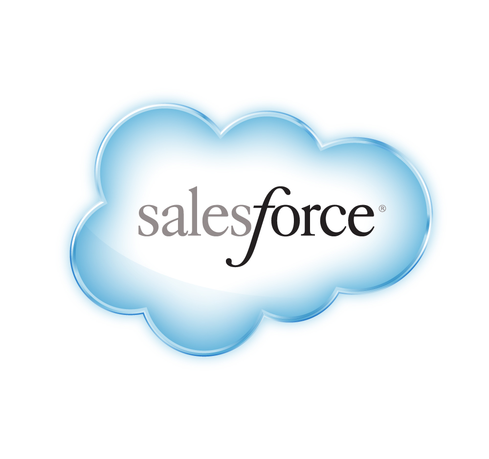Salesforce Customers Investing In Multiple Clouds, Report FindsSalesforce Customers Investing In Multiple Clouds, Report Finds
Bluewolf consulting has released its fourth customer feedback report on Salesforce. It finds that the use of multiple clouds is increasing.


Salesforce Vs. The Competition: A CRM Primer
Salesforce Vs. The Competition: A CRM Primer (Click image for larger view and slideshow.)
Bluewolf, a consulting firm that designs enterprise systems around the Salesforce platform, is finding a growing number of Salesforce customers are investing in more than one Salesforce cloud product at a time and starting to invest more heavily in analytics.
However, there's still a long way to go.
Just 6% of Salesforce customers have invested in the Salesforce Analytics Cloud, a new offering launched in November. About 14% are planning to do so over the coming 12 months, according to Bluewolf's fourth annual State of Salesforce report for 2015.
That finding illustrates how Bluewolf is in a position to track the uptake of Salesforce technologies.
Bluewolf was founded as a consulting business 15 years ago and was one of the first to focus on Software-as-a-Service (Saas) technologies. It built up a broad business with Salesforce customers, and has consolidated feedback from 1,500 of them into its State of Salesforce report, with a disclaimer that Salesforce didn't influence its questions, data, or content.
"Bluewolf is the sole producer of this report," it claims.
Figure 1: 
(Image: Salesforce)
Nevertheless, Bluewolf and Salesforce interests are closely intertwined. Bluewolf cites Standard Insurance as an example of how it used the third-party Apttus Quote-to-Cash application on top of Salesforce to build a customer quote tool that cut Standard's time to deliver quotes from three days to a fraction of an hour, it says.
One of Bluewolf's principal findings about the state of Salesforce SaaS is that a growing share of the customer base is using more than one Salesforce cloud service. Salesforce offers the Sales Cloud, Service Cloud, Marketing Cloud, Wave Analytics Cloud, Community Cloud, and App Cloud, the latter the most recent addition for customizing Salesforce apps or building new apps to work with them.
[Want to learn more about Salesforce Wave Analytics? Check out information's coverage.]
Forty-nine percent of Salesforce's customers are using two or more of these cloud services; 22% are using three or more, a doubling of the number in that category from a year ago. That fact, along with a potential 20% of the customer base adopting Analytics Wave over the next 12 months, illustrates how SaaS users find it easy to graft on additional functions once they're familiar with a vendor's user interface and pricing model.
When it comes to IT spending, Bluewolf says 64% of customers reported that they plan to increase their Salesforce budgets over the coming 12 months; 11% said they will increase the Salesforce share of their budget by 50% or more.
Specifically, 86% of the customer base uses the Sales Cloud, according to the Bluewolf sample. Of that share, 53% of these customers plan to increase their use and 44% plan to hold it steady at the present level. Likewise, 51% use the Service Cloud. Of that total, 44% plan to increase their use and 52% plan to remain where they are. The same figures for the Marketing Cloud are: 40% use it, and of those 36% plan to increase use and 61% plan to stay at their present level.
No budget projection was collected for Community Cloud, but 17% of customers currently use it, a figure slated to nearly double to 33% over the next 12 months, according to Bluewolf.
Although it's still early for customers to be using Wave Analytics, 68% of respondents said they wished to increase their use of analytics in some form over the coming 12 months. They cited several barriers to doing so. For example, 30% had difficulty giving their analysts access to different types of data, 28% said "poor or inconsistent" data quality, and 18% had difficulty reconciling data from different sources -- they had no one source of the truth.
Another 12% lacked the time to compose analytics reports; 7% said they lacked easy to use visualization tools; and 5% said they lacked data analysis skills.
Customers Using Analytics
Some respondents said they expect their data integration to improve as they expand their use of the Salesforce platform, but 58% of them made the point that they need to define and share best data analytics practices within
(Continued on page 2)
their own ranks. Attending to the human engineering side of the problem would increase the value of their Salesforce customer relationship applications, they said.
One of those best practices is a methodical cleansing of data so that one view of the customer can emerge, as opposed to conflicting data and conflicting views, the report said. To do that, it's necessary that someone assess data value at the start of its collection, and then find and eliminate any manual date-entry errors upon entry.
Once good data is acquired it can be enhanced or expanded by adding a customer's DUN number (the nine-digit unique identifier that Dun & Bradstreet assigns each company globally), allowing different parts of the company to be recognized around the world, even if operating under a slightly different name.
Salesforce customers are becoming increasingly adept at making data enhancement and other additions to their Salesforce applications, the report said. In 2014, 44% of customers released a change to their Salesforce instance at least once a month. In 2015 that figure jumped to 64%, making such monthly changes and additions. The number of companies making weekly changes is still small, but that number increased by a factor of three this year, the report said, without naming a figure.
"The best companies have an established cloud governance board and have implemented application lifecycle management (ALM) tools in order to evaluate user suggestions, manage releases, and provide training to affected users," the Bluewolf authors wrote. Having a board and ALM tools differentiates some Salesforce users. They are more likely to report revenue growth and improved customer experience, crediting their use of Salesforce applications.
While the Bluewolf study attributed many gains to Salesforce adoption, it also made clear that SaaS alone isn't enough. Enterprise users need to have the same sound software infrastructure practices in place with the changes to Salesforce applications that they made with their custom applications. And revenue gains may stem not only from the use of the application, but also from the degree of success customers have in constantly customizing them to their changing business conditions.
And that takes company investment. "Those that budget for innovation and governance prosper," concluded Bluewolf's Steve Faris, chief platform officer.
About the Author
You May Also Like






